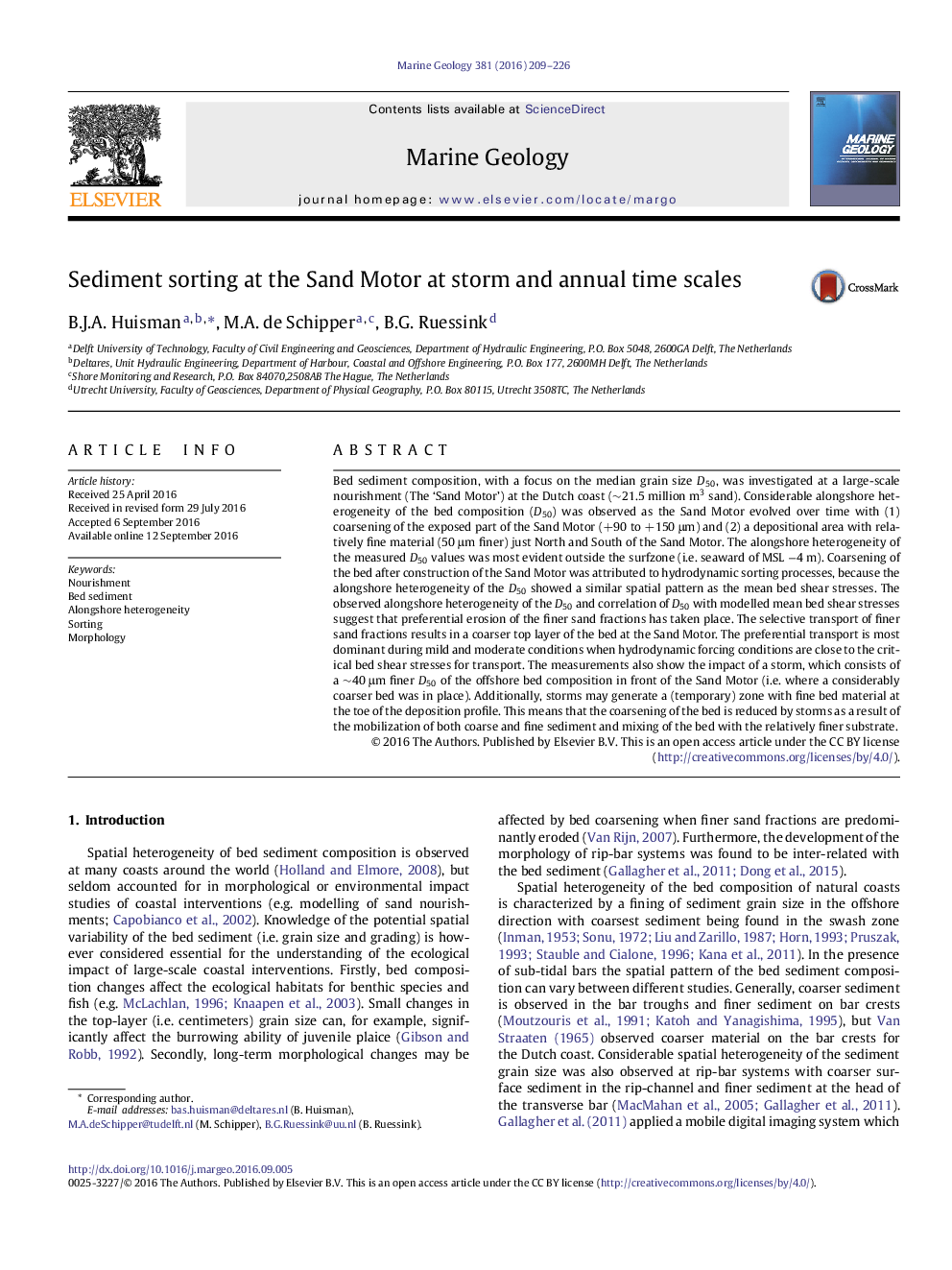| کد مقاله | کد نشریه | سال انتشار | مقاله انگلیسی | نسخه تمام متن |
|---|---|---|---|---|
| 6441277 | 1639071 | 2016 | 18 صفحه PDF | دانلود رایگان |
- Considerable alongshore heterogeneity of the D50 was observed (up to 150 μm coarser).
- Storms can induce a fining of the bed on a foreshore with an armored top-layer.
- Daily hydrodynamic forcing conditions coarsened the bed at the Sand Motor.
- Preferential transport of finer sand fractions induced bed armoring at the Sand Motor.
- Sediment surveys at the Sand Motor provide a unique data set for the calibration of numerical models.
Bed sediment composition, with a focus on the median grain size D50, was investigated at a large-scale nourishment (The 'Sand Motor') at the Dutch coast (â¼21.5 million m3 sand). Considerable alongshore heterogeneity of the bed composition (D50) was observed as the Sand Motor evolved over time with (1) coarsening of the exposed part of the Sand Motor (+90 to +150 μm) and (2) a depositional area with relatively fine material (50 μm finer) just North and South of the Sand Motor. The alongshore heterogeneity of the measured D50 values was most evident outside the surfzone (i.e. seaward of MSL â4 m). Coarsening of the bed after construction of the Sand Motor was attributed to hydrodynamic sorting processes, because the alongshore heterogeneity of the D50 showed a similar spatial pattern as the mean bed shear stresses. The observed alongshore heterogeneity of the D50 and correlation of D50 with modelled mean bed shear stresses suggest that preferential erosion of the finer sand fractions has taken place. The selective transport of finer sand fractions results in a coarser top layer of the bed at the Sand Motor. The preferential transport is most dominant during mild and moderate conditions when hydrodynamic forcing conditions are close to the critical bed shear stresses for transport. The measurements also show the impact of a storm, which consists of a â¼40 μm finer D50 of the offshore bed composition in front of the Sand Motor (i.e. where a considerably coarser bed was in place). Additionally, storms may generate a (temporary) zone with fine bed material at the toe of the deposition profile. This means that the coarsening of the bed is reduced by storms as a result of the mobilization of both coarse and fine sediment and mixing of the bed with the relatively finer substrate.
Journal: Marine Geology - Volume 381, 1 November 2016, Pages 209-226
